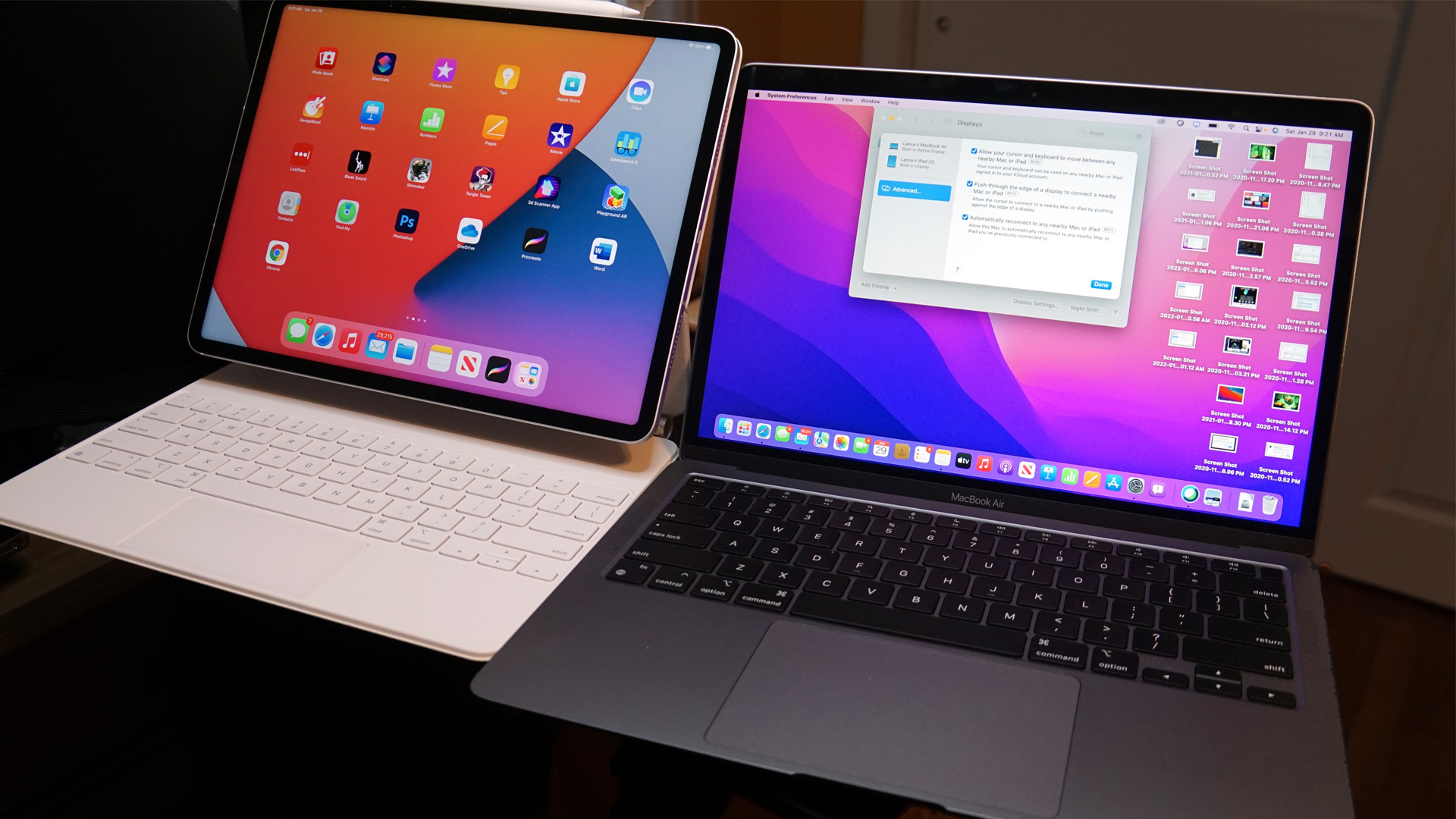Are macOS and iPadOS becoming one? Not exactly, but the arrival of Universal Control on iPad OS 15.4 Beta and macOS Monterey 12.3 Beta pierces the thinning barrier between the two.
The update, which may take weeks to arrive for general download, connects a Mac and iPad and creates an open road for your cursor to travel from one interface to the other without breaking a sweat.
There are some small hoops to jump through, like signing in to all the devices with the same Apple ID and verifying that you want to connect these systems, but you only do that once. After that, Universal Control gives you a double-wide desktop, albeit one with some significant limitations.

Universal Control might remind some of Apple’s Sidecar for macOS, which Apple introduced a few years ago. It’s similar but less of a two-way street than Universal Control. It extended the Mac desktop onto the iPad, which more or less put the iPadOS to sleep in the background. It was a bit more than that, though, in that you could use your finger on the iPad like a mouse and, if you had an Apple Pencil, use it to draw on some macOS apps much in the same way you would on an iPad.
After I installed the latest development betas and set up my iPad Pro 12.9 and MacBook Air M1 with the Universal Control, I found I could instantly move my cursor on the Mac to the left, see a little control bar appear along the edge of my iPad display (it appears only upon the initial connection), and slip right through the ether to the iPad screen. After that, the door is more a less open for dual-platform operations. I can even grab, say, an image and drag it from the Photo app on the Mac into Procreate running on the iPad. I could not, however, drag and drop images from my Mac desktop into a Mail window open on the iPad. They would drag to the screen, but then disappear instead of appearing in the message.
There’s still the ability to extend or mirror your Mac display onto the iPad, though it’s hidden under Advanced settings. This offers the added benefit of being able to drag over complete application windows from one screen to the other. When I use Universal Control to move my mouse between platforms, it puts the iPad to the left of my Mac. Switching to screen extension expands the Mac display on the opposite side.

Screen extension also turned off the iPad’s Magic Keyboard trackpad but, like Sidecar, it still lets me use the Apple Pencil. I can even enable the Pencil’s double tap in the settings.
In Universal Control’s “Linked Keyboard and Mouse Mode” I can also use the keyboard on the Mac to take notes on Note on the iPad, while also using the same keyboard to take notes in another instance of Notes on the Mac. That’s an instant doubling of my productivity power. I can do it in reverse, as well, using the iPad’s Magic Keyboard to type on either screen.

The ability to connect the two disparate OSes and use one keyboard and mouse to control all of it is, as some have noted, magical. It’s also still limited. Until I can drag complete windows and Mac or iPad Apps from one screen to the other, this universe will still feel relatively small.
It’s early days, of course. The beta’s not done, and Apple may refine and add some features before it arrives as a fully baked set of updates.
Ever since Apple started positioning the iPad as a productivity tool and not simply a content consumption device, it’s been transforming iPadOS – like adding mouse and trackpad support – to better support that notion.
Universal Control is another exciting, big step in a long-term effort to make the marriage between iPad OS and macOS seamless.
Will they ever become one platform? I think it’s still too soon to tell.
